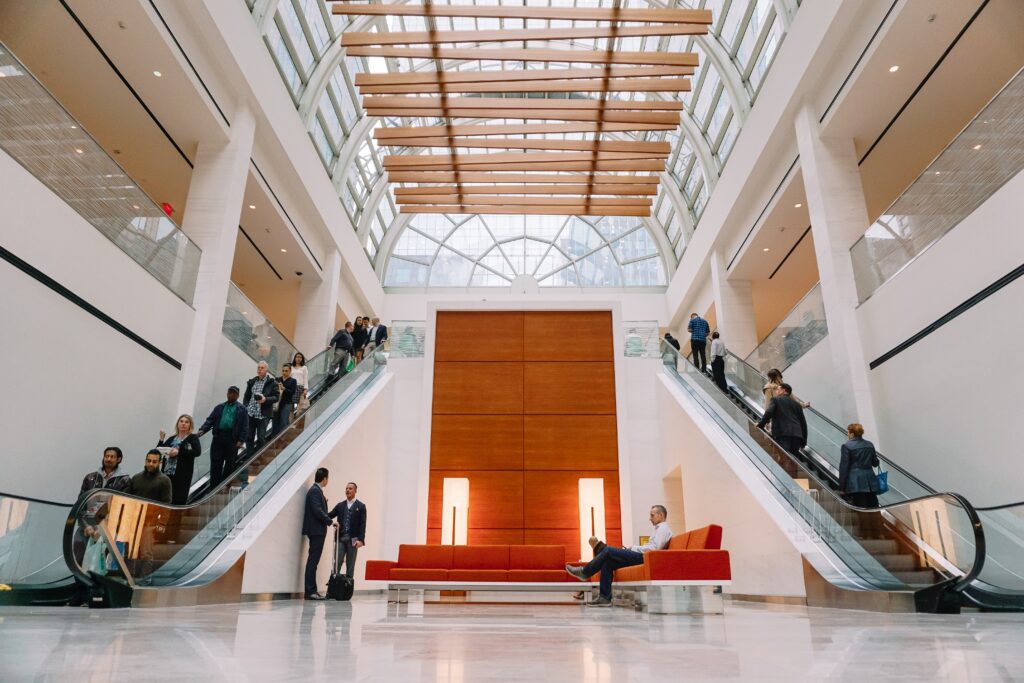To demonstrate the extensive impact of green leasing and programs that support its adoption, IMT, the Department of Energy (DOE), and RE Tech Advisors collaborated to develop a paper for the ACEEE Summer Study: New Leasing Languages: How Leasing Programs can Overcome the Split Incentive.
The paper explores the impact of green leasing programs, tenant engagement, opportunities for expanding leasing programs to new space types, and potential solutions for improving the efficiency of leased space. Below are the key findings from the paper.

Green Lease Leader’s Represent nearly 8% of Total Leased Commercial Space
The Green Lease Leaders program has been setting national standards for what constitutes as a green lease since 2014. Each year the program has grown to recognize an increasingly diverse group of innovative owners and tenants that are modernizing their leases to spur collaborative action and drive investments in high performing buildings. The 2020 class is the largest yet, representing 1.058 billion square feet. Since its inception, the Green Lease Leaders program has impacted an estimated nearly 3 billion square feet of building space: consisting of 294 million square feet in government buildings and 2.67 billion square feet of commercial space across multiple sectors, which equates to nearly 8% of the total leased commercial space in the US. The paper also estimates that green leasing could generate $17.85 billion in annual energy savings if all leased commercial office space in the US leveraged the potential energy savings facilitated by specific green lease clauses.
Green Leases Set the Foundation for Healthier High-Performing Buildings
The paper also notes that – due to the lease’s role of establishing the foundation of the landlord-tenant relationship – expanding the scope of the lease can address a number of sustainability and landlord-tenant relationship issues, including energy and water use, information sharing, occupant health and wellness, and tenant retention.
Improving occupant health and wellness and retention are at the forefront of real estate owner and tenant interests due to the current pandemic. Ultimately, green leasing aligns the incentives of the landlords and tenants and contributes to stronger landlord-tenant partnerships, enabling building owners and managers to invest in both the human and built environment aspects of the building. Building improvements facilitated by a green lease have the potential to increase occupant productivity by 8%-10% due to improved thermal comfort, ventilation, air quality, and movement according to a study by stok, LLC.
Green Leases are Growing in Popularity, Especially in Cities & Data Centers
The expansion of green leasing into new sectors is a natural continuation of the Green Lease Leaders program and in alignment with industry trends as green leases become standard leasing practice. The program has had success recently recruiting cities, counties, and states that have set climate goals and are investigating how green leasing can assist them achieve their targets. The City of Cleveland was the first city to be recognized as a Green Lease Leader in 2019 and the trend has continued into 2020 with the Department of General Services of California, City of Fort Collins, and Hillsborough County Florida gaining recognition. As more municipalities are choosing to lead by example on climate action, green leasing is likely to continue to grow in support of these efforts.
Similarly, Green Lease Leaders has seen an expansion into the energy-intensive data center industry. In the last two years, several data center property owners and investors became Green Lease Leaders. The team anticipates continued program growth in that sector, particularly as telecommuting and overall digitization have grown in response to the current pandemic.
Interested in learning more about the value of green leasing? Please read the full paper ACEEE Summer Study paper New Leasing Languages – How Leasing Programs can Overcome the Split Incentive or check out the accompanied recording which provides a more in depth summary of the paper!
